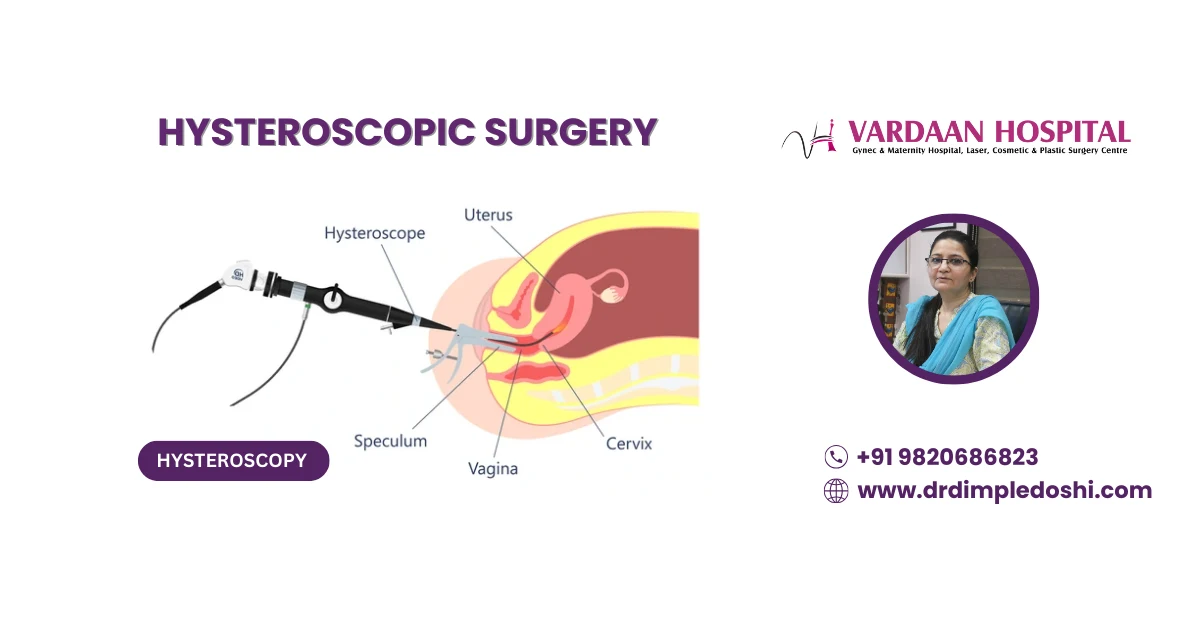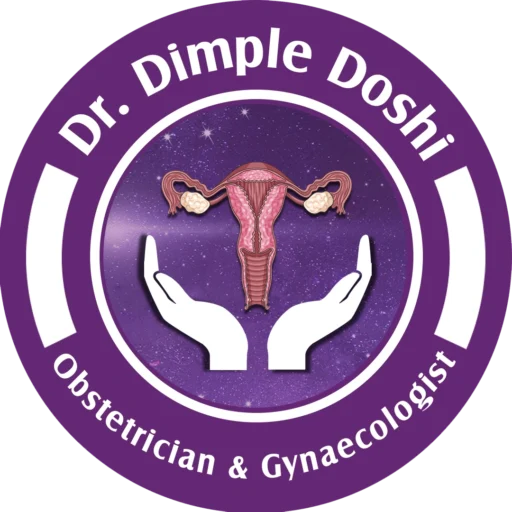Advanced Hysteroscopy Surgery in Goregaon West, Mumbai
 What is Hysteroscopy Surgery?
What is Hysteroscopy Surgery?
Hysteroscopy is a procedure that uses a thin, lighted tube called a hysteroscope, which is connected to a high-definition camera. This device provides a clear view of the uterine cavity, helping gynecologists diagnose and treat conditions such as fibroids, adhesions, polyps ; septum and abnormal bleeding.
Hysteroscopy is a safe, minimally invasive, daycare procedure used for diagnosing and treating various uterine conditions. This advanced technique is scarless and requires no cuts, making it an ideal solution for women experiencing infertility or abnormal uterine bleeding.
Indications for Hysteroscopy – When is it Needed?
Diagnostic Hysteroscopy is recommended for:
- Evaluating uterine cavity in case of infertility and taking endometrial samples for infection in infertility
- Investigating abnormal or postmenopausal bleeding
- Diagnosing uterine septum, fibroids, and adhesions and polyps
- Performing a second-look hysteroscopy after surgery
Operative Hysteroscopy is performed for:
- To remove the septum ; also called septum resection or septoplasty
- To remove the submucosal fibroid.
- To remove the adhesions inside the uterus developed due to infection, surgery or D and C
- To open up the block of the fallopian tube(s).
- To take the site specific biopsy in a case of abnormal uterine bleeding or post menopausal bleeding
- To correct isthmocele .
- To remove cesarean scar ectopic pregnancy
- To diagnose the cause of repeated miscarriages.
- To remove the lost copper T or intrauterine device.
- Metroplasty or the correction of the shape of an abnormal uterus.
Benefits of Hysteroscopy Surgery
- Minimally invasive – No cuts or stitches required
- Daycare procedure – Short hospital stay
- Minimal pain and fast recovery
- Accurate diagnosis of uterine conditions
- Effective treatment for fibroids, polyps, and adhesions and septum
- Improves fertility in many cases
- Alternative to hysterectomy for certain conditions
Hysteroscopy Procedure – How is it Performed?
- Anesthesia: Done under short general anesthesia or short sedation
- Duration: 8-10 minutes for diagnostic hysteroscopy;; 15-20 minutes for operative hysteroscopy
- Procedure:
- The uterus is distended with sterile saline using a hysteromat system which ensures constant saline flow with controlled measure and set pressure to ensure safety of the procedure.
- A systematic examination of the uterine cavity is performed
- If necessary, specialized hysteroscopy instruments are used for treatment
- The procedure is usually followed by D&C for accurate diagnosis
Recovery After Hysteroscopy Surgery
- Stay: Daycare procedure, discharge within a few hours
- Diet: Normal diet within 2-4 hours
- Mobility: Walk within 15 minutes to 1 hour
- Pain Level: Minimal to no pain
- Bathing: Allowed on the same day
- Follow-up: Scheduled after 5-6 days
Complications of Hysteroscopy Surgery
While hysteroscopy is generally safe, rare complications include:
- Anesthesia-related risks
- Excessive bleeding
- Fluid overload
- Uterine perforation
- Infection
If you experience severe pain, excessive bleeding, fever, or urinary issues, contact your doctor immediately.
Why Choose Vardaan Hospital for Hysteroscopy in Goregaon West, Mumbai?
Dr. Dimple Doshi, an expert gynecologist at Vardaan Hospital, has successfully performed thousands of hysteroscopies, ensuring accurate diagnosis and effective treatment for women dealing with gynecological concerns.
Hysteroscopy Surgery Cost in Goregaon West, Mumbai
Dr. Dimple Doshi at Vardaan Hospital offers competitive hysteroscopy surgery pricing:
- General Ward: ₹50,000
- Semi-Special Room: ₹68,000 – ₹75,000
- Deluxe Room: ₹1.2 Lakhs
- Super Deluxe Room: ₹1.5 Lakhs
- Suite Room: ₹2 Lakhs
For more details, consult Dr. Dimple Doshi at Vardaan Hospital, Goregaon West, Mumbai today!
Frequently Asked Questions (FAQ) on Hysteroscopy
Q1. What is Hysteroscopy?
Ans. It is a procedure where a thin hysteroscope is inserted through the cervix to examine the uterus.
Q2. Is Hysteroscopy Painful?
Ans. No, diagnostic hysteroscopy is almost painless. Surgical hysteroscopy is performed under sedation to ensure comfort.
Q3. Will Hysteroscopy Affect Ovulation?
Ans. No, hysteroscopy does not impact ovulation.
Q4. Is Hysteroscopy a Major Surgery?
Ans. No, it is a minor, minimally invasive procedure requiring no overnight hospital stay.
Q5. What is the Cost of Hysteroscopy in Mumbai?
Ans. The cost of hysteroscopy in Mumbai ranges from ₹20,000 to ₹60,000, depending on the hospital and procedure type.
Medical Code for Hysteroscopy Surgery
ICD-10 Codes for Hysteroscopy
- N85.0 – Endometrial hyperplasia
- N92.0 – Excessive and frequent menstruation with regular cycle
- D25.1 – Intramural leiomyoma of the uterus (for fibroids)
- C54.1 – Malignant neoplasm of the endometrium
CPT Codes for Hysteroscopy
- 58555 – Diagnostic hysteroscopy
- 58558 – Hysteroscopy with biopsy or polypectomy
- 58561 – Hysteroscopy with fibroid removal
- 58563 – Hysteroscopy with endometrial ablation
Reference taken: Codify by AAPC

